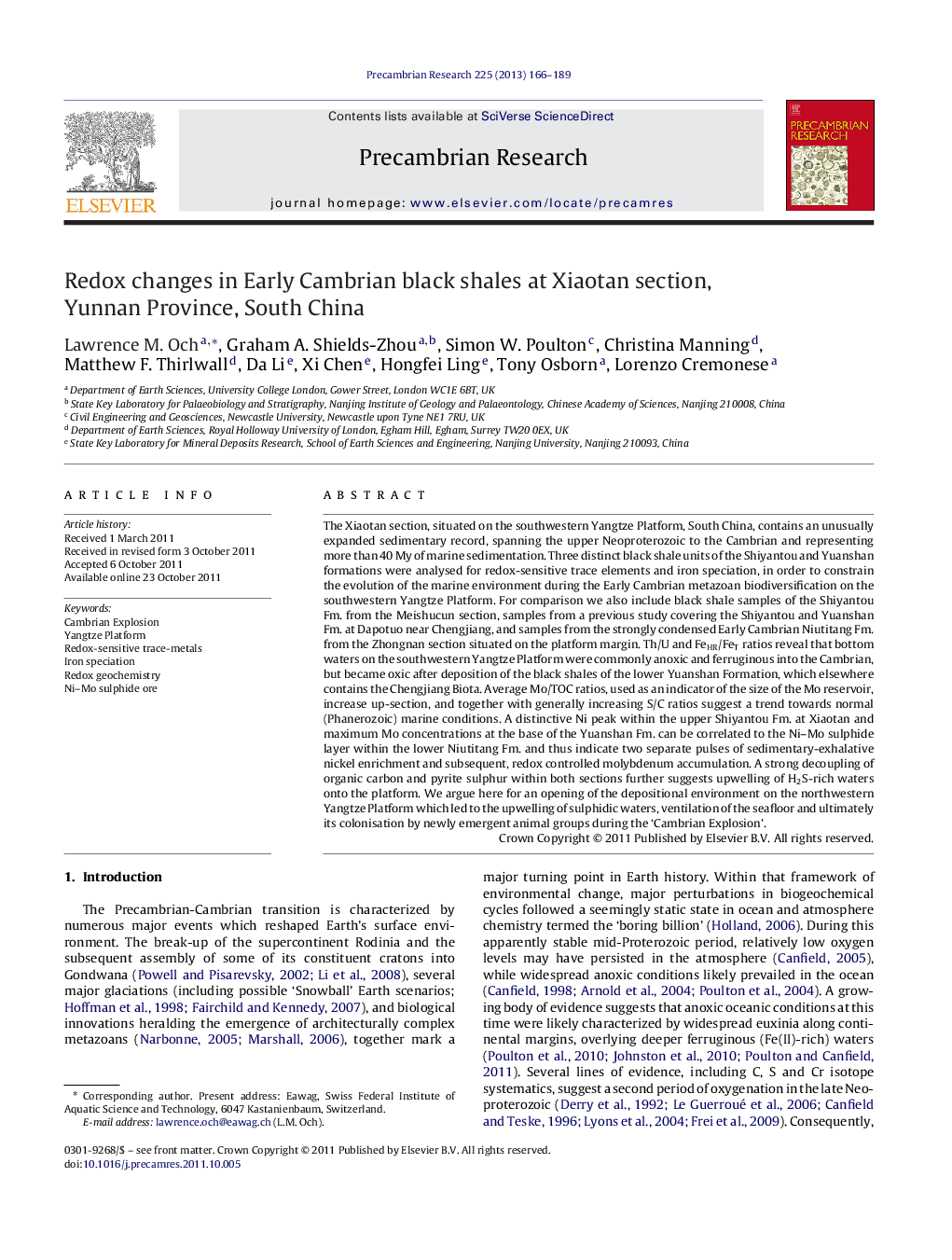| کد مقاله | کد نشریه | سال انتشار | مقاله انگلیسی | نسخه تمام متن |
|---|---|---|---|---|
| 4723324 | 1639649 | 2013 | 24 صفحه PDF | دانلود رایگان |

The Xiaotan section, situated on the southwestern Yangtze Platform, South China, contains an unusually expanded sedimentary record, spanning the upper Neoproterozoic to the Cambrian and representing more than 40 My of marine sedimentation. Three distinct black shale units of the Shiyantou and Yuanshan formations were analysed for redox-sensitive trace elements and iron speciation, in order to constrain the evolution of the marine environment during the Early Cambrian metazoan biodiversification on the southwestern Yangtze Platform. For comparison we also include black shale samples of the Shiyantou Fm. from the Meishucun section, samples from a previous study covering the Shiyantou and Yuanshan Fm. at Dapotuo near Chengjiang, and samples from the strongly condensed Early Cambrian Niutitang Fm. from the Zhongnan section situated on the platform margin. Th/U and FeHR/FeT ratios reveal that bottom waters on the southwestern Yangtze Platform were commonly anoxic and ferruginous into the Cambrian, but became oxic after deposition of the black shales of the lower Yuanshan Formation, which elsewhere contains the Chengjiang Biota. Average Mo/TOC ratios, used as an indicator of the size of the Mo reservoir, increase up-section, and together with generally increasing S/C ratios suggest a trend towards normal (Phanerozoic) marine conditions. A distinctive Ni peak within the upper Shiyantou Fm. at Xiaotan and maximum Mo concentrations at the base of the Yuanshan Fm. can be correlated to the Ni–Mo sulphide layer within the lower Niutitang Fm. and thus indicate two separate pulses of sedimentary-exhalative nickel enrichment and subsequent, redox controlled molybdenum accumulation. A strong decoupling of organic carbon and pyrite sulphur within both sections further suggests upwelling of H2S-rich waters onto the platform. We argue here for an opening of the depositional environment on the northwestern Yangtze Platform which led to the upwelling of sulphidic waters, ventilation of the seafloor and ultimately its colonisation by newly emergent animal groups during the ‘Cambrian Explosion’.
► Geochemical profile across Early Cambrian black shale successions.
► Multiple redox-proxy approach.
► Weakly reducing conditions followed by upwelling sulphide-rich waters.
► Correlation of Ni–Mo ore layer on platform margin.
► Ni–Mo ore layer originates from two separate events.
Journal: Precambrian Research - Volume 225, February 2013, Pages 166–189